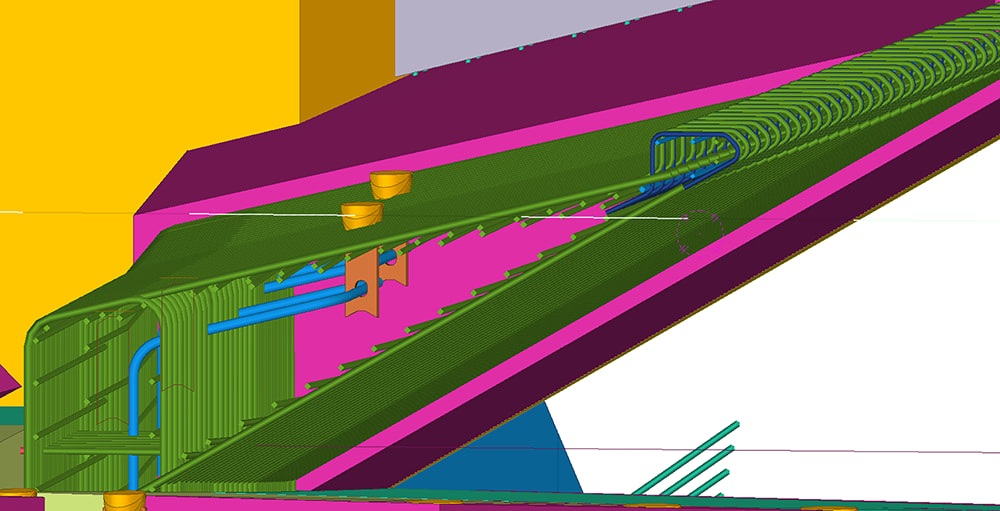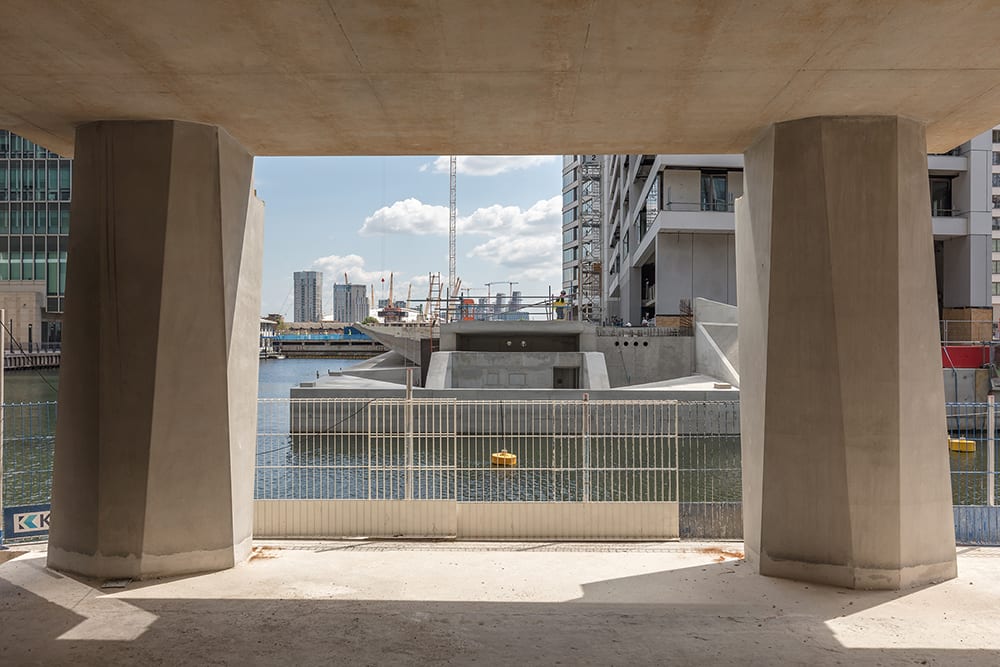Faced with a hybrid mix of pre-cast, cast-in-place and reinforcement concrete, plus a tight delivery schedule, a marine environment and complex construction methodologies, Kilnbridge Construction Services turned to Trimble’s Tekla Structures 3D BIM software for assistance on its Water Street Bridge project at Canary Wharf.
A recent addition to the CW estate, the new Water Street Bridge was designed to provide a road and pedestrian link between Montgomery Square and the new Wood Wharf development, with an upward swing to allow boats to pass underneath.
Kilnbridge, a multidiscipline construction and engineering business, was awarded the £5m project by Canary Wharf Contractors, with the task of designing, fabricating and installing the three primary concrete structures required for the bridge’s construction – the East Abutment, West Abutment and Marine Causeway.
Both the East and West Abutment were to be formed from reinforced concrete. The West Abutment consisted of a number of vertical structures, notably two feature concrete columns that support the bridge’s elastomeric bearings and approach deck. In comparison, the East Abutment is a semi-submerged concrete structure, founded on 1200mm diameter bored marine piles with permanent steel casings sealed into the Lambeth Beds below.

Section view through the typical reinforcement for the precast sloped road walls
Designed to withstand impact from a small ship, the main function of the East Abutment is to support the bridge’s pivot bearing and lifting cylinder, as well as house the other mechanical components and plant room area.
Kilnbridge was also tasked with designing, fabricating and constructing the Marine Causeway, which ran alongside the existing marine deck of the new Wood Wharf development.
It was a complex project, which combined pre-cast, cast-in-place and finished concrete, as well as various temporary works. Kilnbridge therefore turned to Trimble’s Tekla Structures 3D software for assistance.
Alastair Courtney, senior engineer at Kilnbridge, says: “Given the hybrid nature of the structures and concrete elements, effective project coordination and development was crucial. It was here that we were aided immeasurably by the use of BIM and Tekla Structures. As result of some of the elements being highly complex in terms of design and positioning, it was vital that we were able to first model and study them in 3D prior to construction, both to ensure that they were buildable and also to avoid any clashes between the heavy reinforcement elements.”
One such example of this design and construction complexity was the East Abutment. With the intention of reducing the need for marine plant machinery and also improve site safety for workers and operatives, it was concluded that constructing the permanent outer concrete shell structure above the dock water level was the most efficient option, effectively transforming a marine operation into a land-based one.
Courtney explains: “We decided that the outer concrete shell would be constructed above water, complete with a temporary working platform, before gradually being lowered over five metres into the water below.

The West Abutment looking towards East Abutment
“Not only did the BIM software greatly assist with the modelling of the temporary works required for such an operation, including temporary reinforcing bars to suit the change in structural loading, but it also aided in detailing the changing reinforcement requirements. We were able to efficiently model, consider and assess the two differing locations of the structure – a key factor considering the installed position was far from the permanent end location.”
Using BIM helped the team meet very tight deadlines for completing the project’s concrete structures. Courtney says: “By introducing a greater amount of pre-cast elements, we received both large time and cost savings, as well as de-risking the project as a whole – vital considering the tight timescales.
“Through the use of Tekla Structures, we were able to study the 3D model in detail and review both the potential advantages and constructability of changing the concrete elements to precast. In addition, we were also able to ensure that the joints constructed between the pre-cast elements would not impact on the surrounding structures.”
Later in the project, two weeks prior to a key element being constructed, substantial changes in the reinforcement were required. “Thanks to Tekla, what could have been a significant setback and cause of serious delays to the project was easily and efficiently solved,” adds Courtney. “The required changes were all promptly incorporated within the model, Tekla Structure’s automatic clash detection confirmed the design was correct and constructible.
“The corresponding fabrication drawings and schedules were generated within just two days, enabling the new reinforcement to be delivered to site on time. It also allowed us to maximise re-usage of the previously ordered elements from the then obsolete design, subsequently reducing waste.”











